|
|
||||||||||
Grading involves evaluating poultry in terms of the standards to determine the grade. Photos to the right show an A quality young chicken, turkey, duck, and goose. A given lot of poultry may contain a small percentage of a quality lower than the grade specified because some defects are permitted. This is an unavoidable necessity due to today’s production- type processing methods. Poultry grade standards have changed over the years to reflect developments in poultry production, processing, and marketing. Standards for ready-to-cook poultry were added to the regulations in 1950. Roasts were added in 1965. Parts and boneless breasts and thighs were added in 1969. All provisions for grading live and dressed poultry were eliminated in 1976. Large poultry parts, skinless carcasses and parts, and tenderloins were added in 1995. As the need arises and meaningful quality factors are established for other products, additional grade standards will be developed. Regulations provide penalties for the misuse of grading,
such as the false representation that poultry has been officially graded.
Products labeled with the terms “Prime,” “Choice,” and “Select,” which
indicate superior or top quality, must be equivalent to U.S. Grade A. The
letters “U.S.” or “USDA” may only be used with a poultry grademark if the
poultry has been graded by an authorized
•
|

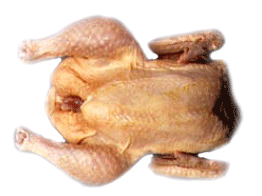
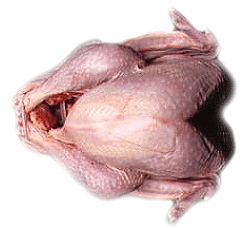
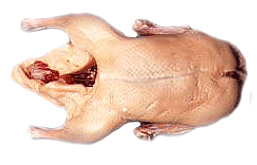
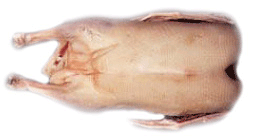
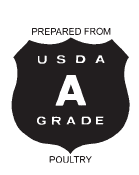 grader
and subsequently checkgraded by a USDA grader. The letter grades A, B, or
C may only be used without the grademark if the product has been graded by
a USDA grader and meets the requirements of the appropriate letter grade.
The words “Prepared From,” or other similar wording, may only be used with
the U.S. grademark if the product was produced from graded poultry.
grader
and subsequently checkgraded by a USDA grader. The letter grades A, B, or
C may only be used without the grademark if the product has been graded by
a USDA grader and meets the requirements of the appropriate letter grade.
The words “Prepared From,” or other similar wording, may only be used with
the U.S. grademark if the product was produced from graded poultry.